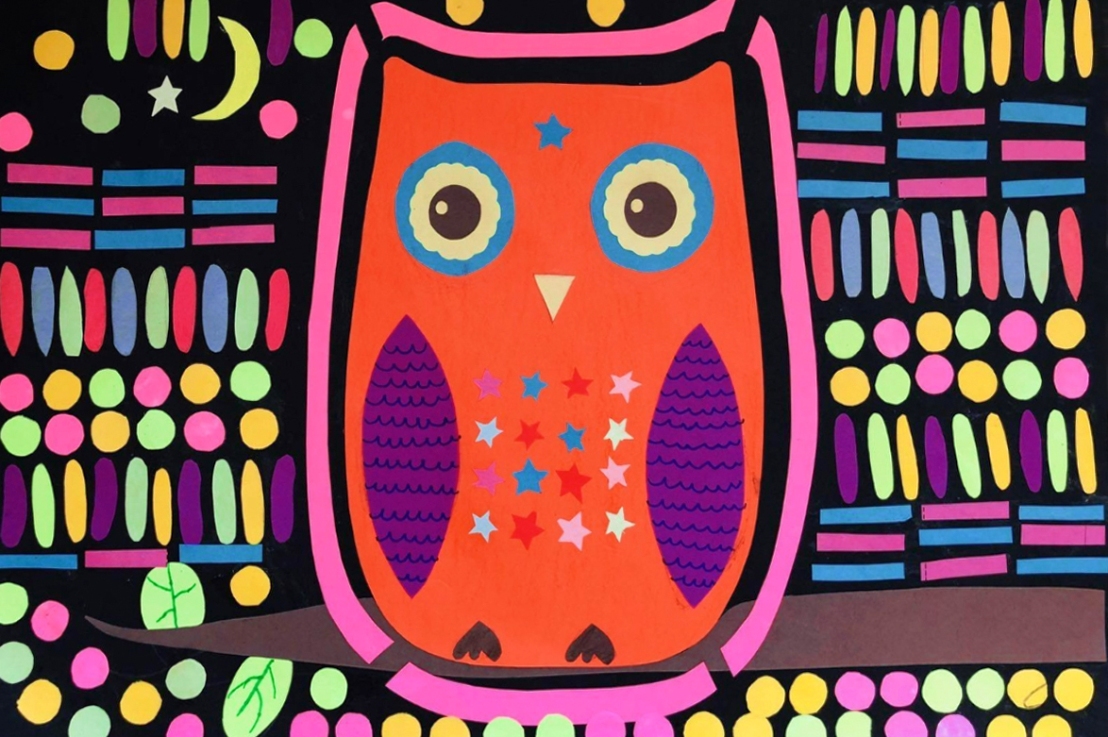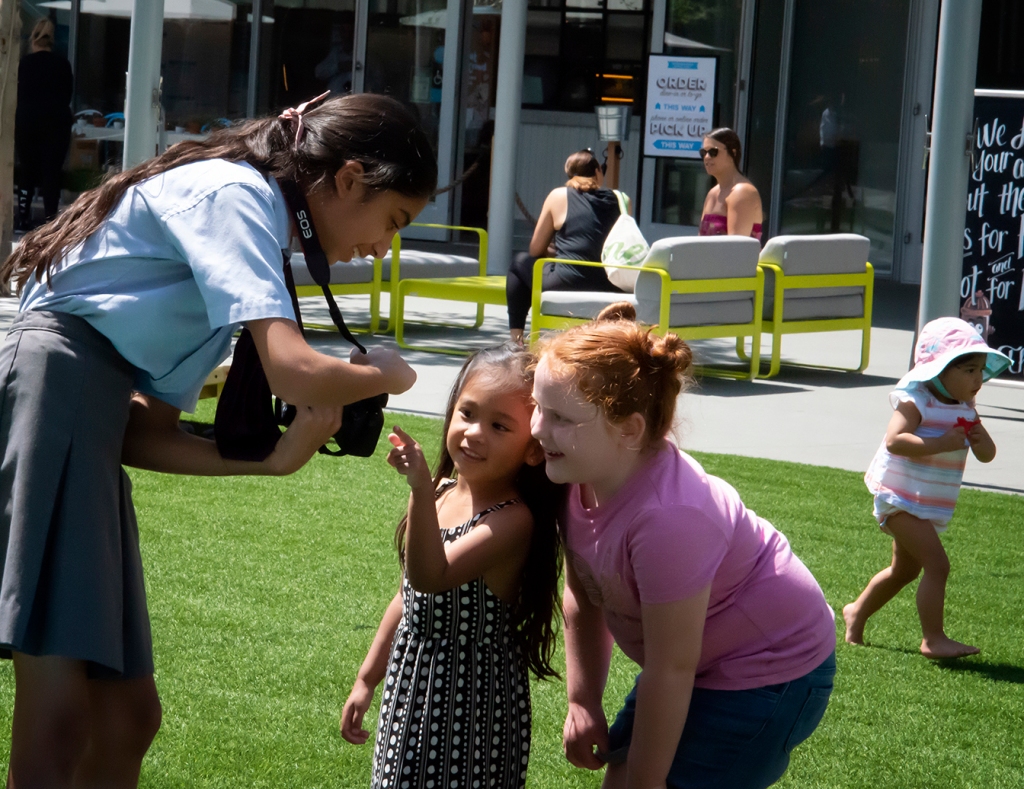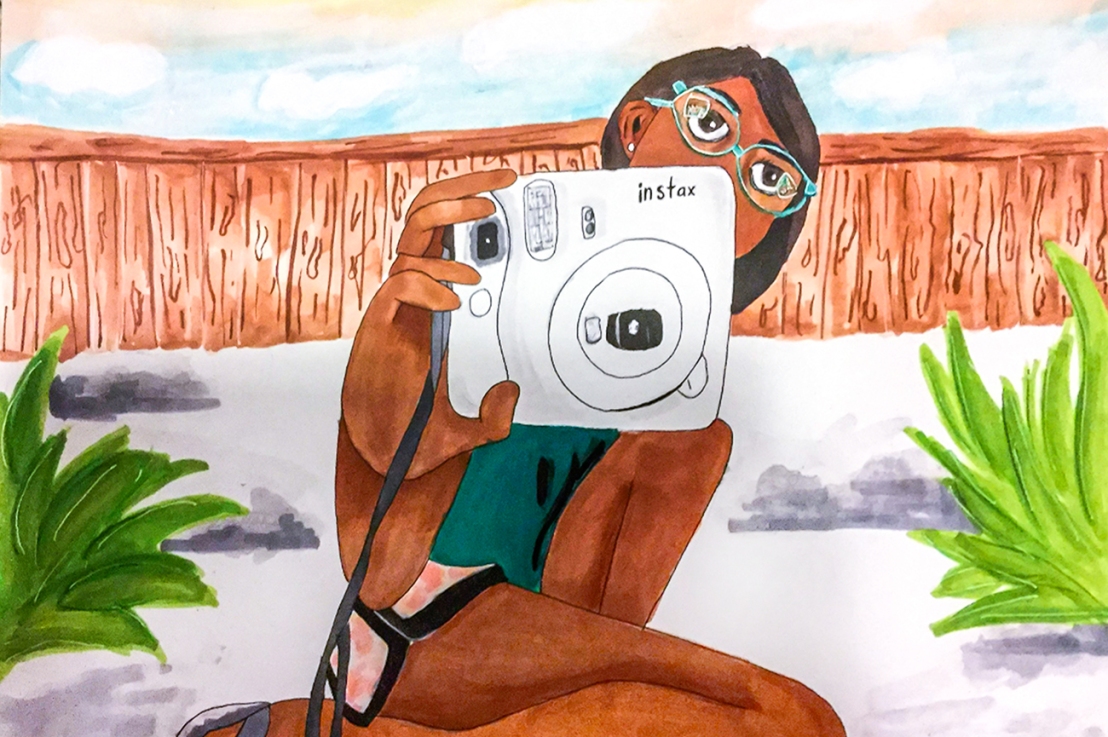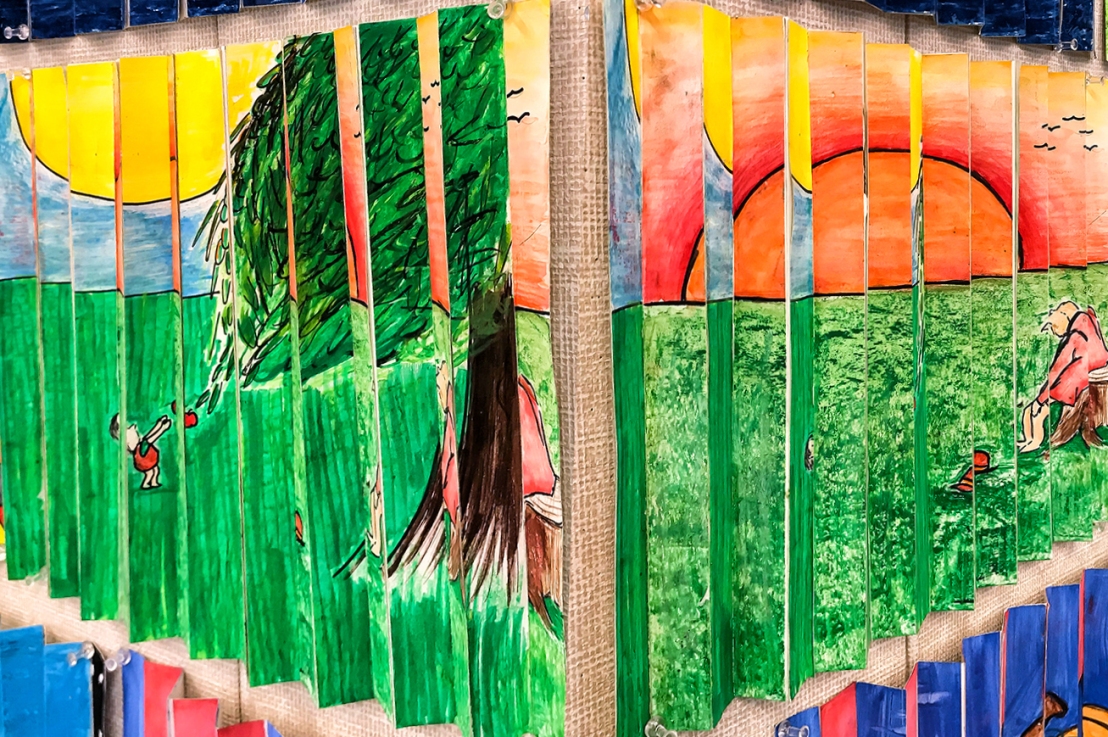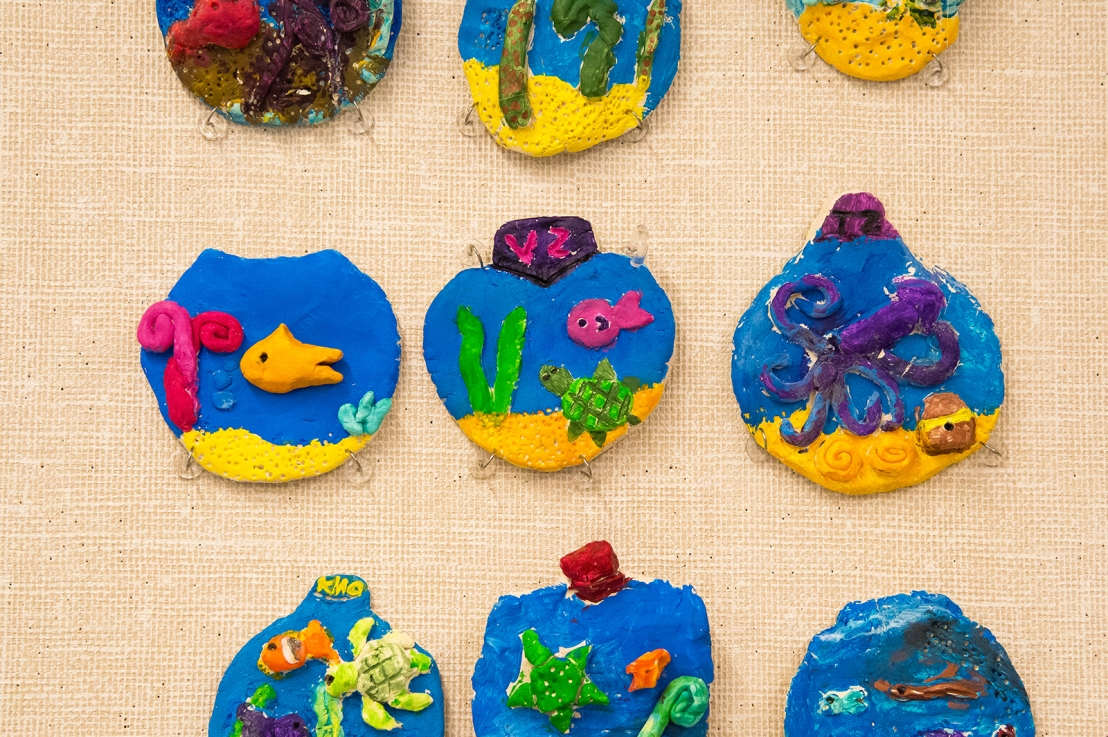Description of the Unit – Students explore the fascinating shadow puppet art form from Indonesia known as Wayang Kulit. Students then create their own shadow puppets, taking particular care to carve patterns on the puppets’ costumes using negative space.
Continue reading “8th Grade – Wayang Kulit Puppets”Author: anita sagastegui
3rd Grade – Mexican Amate Paintings
Description of the Unit – Students will explore the fascinating Mexican folk art known as Amate bark painting. Using their observations of the art form, students will crumple brown kraft paper (a part of this project they love) to give it a bark-like texture, and paint their own painting onto it in the same bold and bright colors as used by Mexican artisans of Amate.
Continue reading “3rd Grade – Mexican Amate Paintings”6th Grade – Arabic Geometric ‘Tiles’
Description of the Unit – Students will explore the centuries-old geometric patterns found in Islamic architecture. Students will use mathematical techniques as instructed in Eric Bourg’s marvelous book, Islamic Geometric Patterns, to re-create a variety of the patterns they have explored through their observations.
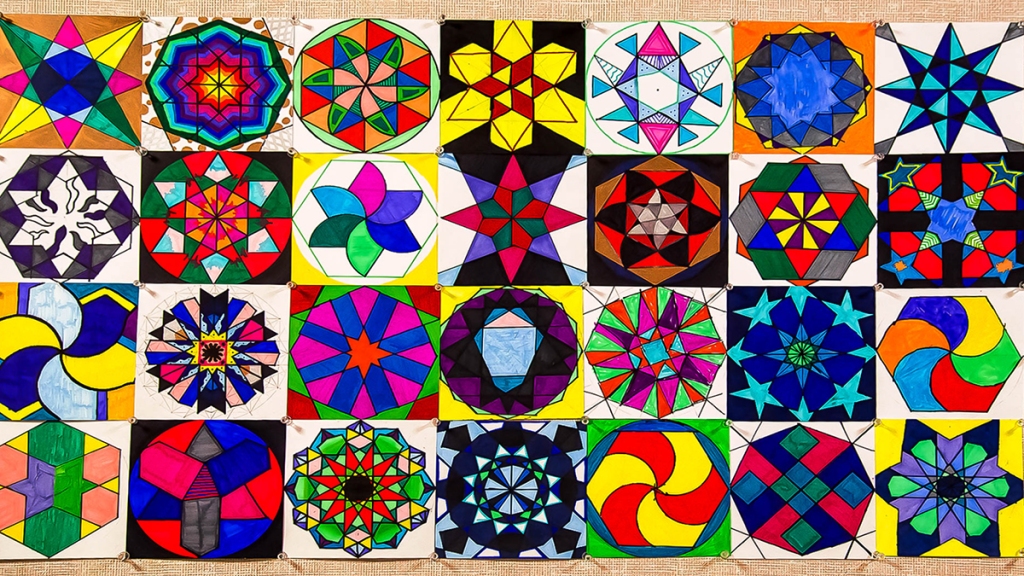
4th Grade – The Mola of Panama
Description of the Unit – The Mola, a traditional cloth worn by the Kuna (from the tiny San Blas Islands off the coast of Panama), are quite brightly colored, in contrasting patterns of various shapes, and in the center depicting what is typically an animal, plant or person of special interest to the Kuna. Students will explore the tradition of Molas, noting the use of contrasting colors, abstract patterns as well as noting the contrasting organic shapes of the main subject to the mostly geometric shapes of the background patterns. Students will use their understanding of these elements to create their own interpretation of the Mola in colored construction paper.
Continue reading “4th Grade – The Mola of Panama”8th Grade Photography Unit, Lesson 4: ISO and Nighttime Photography
Description of the Unit – Students will explore the ISO function on their digital cameras so as to understand how it affects exposure, practicing using it and all previously learned functions to take sharp, interesting nighttime photos.
Activity statement – ISO completes the basic triad of camera functions necessary to understand and manipulate your camera in order to get the shot you want. Our objectives are the following:
- Understand what ISO means
- Understand what the corresponding ISO would be for various light circumstances
- Practice using different ISO’s and examining the results
- Take at least one clear night image
What is ISO? With analog cameras, ISO represented the film’s sensitivity to light, which was rated via a number, such as 400. The more sensitive the film to light, the higher it’s rating, or number; in photography it was also referred to as the film being “faster”. Film with low ISO was typically used in bright, daytime settings, and so of course the higher ISO’s were used if it was overcast, night, or a darker indoor scene. There was always a compromise, however, as the higher the sensitivity, the grainier the film—meaning the image would actually look grainy and lack sharpness. Additionally, with analog cameras, whatever film sensitivity you were using you would be stuck with until the roll of film was all used.
With digital cameras, one can adjust the ISO at any time. However, if one is not actually using film, why is there still ISO? Well, to the best of my knowledge, when digital cameras first came out manufacturers co-opted ISO to reflect the sensor’s performance level under given light circumstances, so as to give photographers the same options as one once had on analog cameras, when adjusting the aperture and shutter speed just weren’t enough. As with analog cameras, higher ISO’s also produce more noise, however camera technology has been decreasing this outcome over the years.
So, on a digital camera, if your setting is in low light, your preferred aperture and shutter speed might not allow enough light to reach the sensor, and therefore you would need to opt for a higher ISO.
Now that students have had a few weeks to learn about and practice using shutter speed and aperture, I invite them to use them, along with ISO adjustments, to take sharp nighttime images. The images may also involve the use of motion of some kind to blur light. Students should consider either using a tripod, or setting their cameras on a steady surface to reduce the possibility of blur due to handholding the camera.
I love shooting at night, so I give students examples of my own photos and talk to them about the settings I used, the experience I had while shooting each image and what I learned with each.
As always, in class we go on a photo walk to continue to play with our camera’s settings. The nighttime photos will be the assigned homework.
Goals – Students should…
Understand:
- What ISO is
- How ISO affects exposure
Know:
- When a high ISO would be used vs. a low one
Be able to:
- Adjust the ISO setting on their cameras
- Take an image at night that is sharp
Resources and materials –
- A digital camera with manual settings
- A memory card with enough space for the day’s photo excursion
- Fully charged battery
- Examples of photos highlighting the day’s lesson (shutter speed manipulation in this case)
- Optional: a tripod for sharper nighttime images
Students were assigned the nighttime photography over winter break, so were fortunate enough to take images celebrating the holidays and new year’s eve.
7th grade – Cbabi Bayoc and Foreshortening
Description of the Unit – When I introduce students to Cbabi Bayoc they often wonder about his “cool sounding” name. Where does it come from? His beautiful name comes from the artist himself. He changed his first name from Clifford to Cbabi, an acronym for Creative Black Artist Battling Ignorance, and, together with his wife, created a new last name for themselves, Bayoc, an acronym for Blessed African Youth of Creativity. Creative he is: Bayoc has worked his way from being a caricature artist at Six Flags in St. Louis to a renowned and sought-after artist commissioned by other notable institutions and artists, including the late musician Prince who commissioned Bayoc to create an album cover for him. Bayoc has also painted school and community murals, and in 2012 he took on one of his most ambitious projects, “365 Days with Dad.” Bayoc painted one painting a day that depicted a positive image of black fatherhood (all while raising his own kids) for the entire year. These uplifting, emotional paintings—such as one of a father swimming with his son, another of a dad reading to his child—has drawn praise from all around the nation, especially within the black community. Bayoc’s work is a testament to the positive influence an artist can have on a community and on the world, and he and his work should be studied and celebrated in our nation’s schools. Please visit his website at: https://cbabibayoc.com/

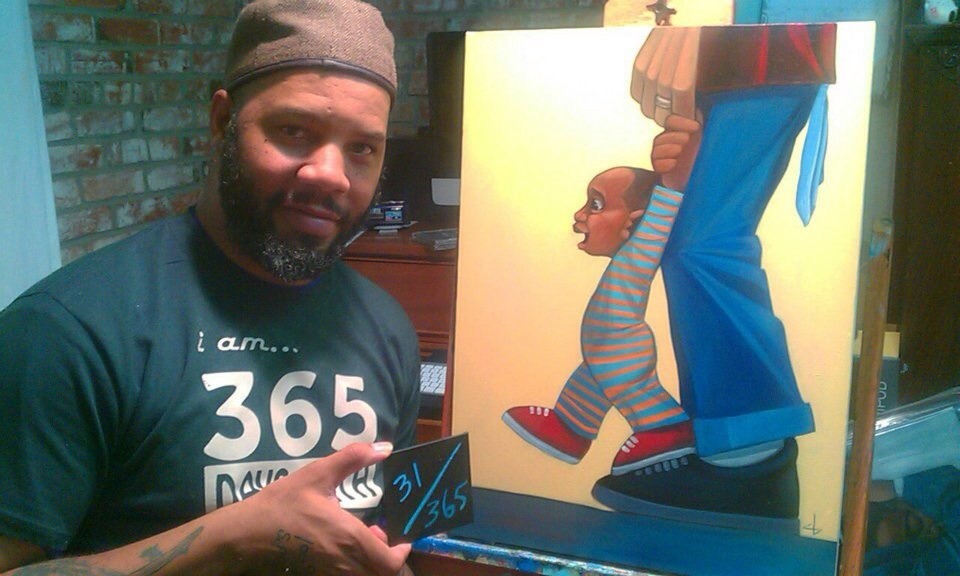
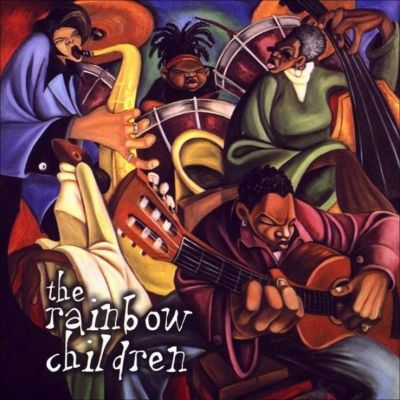
Activity statement – (Perspective and foreshortening)
One of the techniques that Cbabi Bayoc uses to great effect is foreshortening. I like to use three of his paintings of musicians to explore the mechanism and effect of foreshortening in two-dimensional art: Blues Man, Light Touch, and Serenading the Street. Observing the paintings, one notices how the use of foreshortening works to direct the movement of our eye, and to draw us towards a focal point.

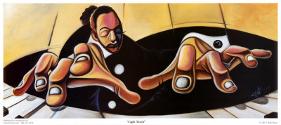

Foreshortening places the viewer nose-to nose with the subject, especially in Bayoc’s work. The size exaggeration in foreshortening brings a sense of immediacy to the moment; we can hear the music being played, sensing the passion and concentration behind the music. Foreshortening in this case makes the action of playing music the true subject of the painting. Bayoc is inviting us to pay attention to the instruments and hands, but more abstractedly, he is asking us to pay attention to the music. In essence, foreshortening is emphasizing the music.
Students also observe the way in which two elements play a key role in how we relate to these paintings. Those elements are color and shape. The colors Bayoc uses are earthy, vibrant and alive, without being overwhelming. Some students have mused that the colors are used perhaps to emphasize warmth, energy and passion.
The features of the body and face are rendered through basic shapes, abstracting the figure somewhat to give us a more animated representation of reality. There’s an immediacy and accessibility to these paintings that seems to be the result of this slight abstract of the humans depicted.
Student work: A Foreshortened Self-portrait – I ask my students: “how can you depict yourself in a situation that requires foreshortening, and make it truly come to life?” This is a challenging project for the students, for in order to express foreshortening you have to have the correct point-of-view. It is important to spend time looking at other images that express foreshortening as well, and I like to pull up images of swimmers, basketball players and martial artists that express foreshortening and non-foreshortened postures to discuss the differences in perspective, point-of-view and distance.

Goals – Students should…
Understand:
- What foreshortening is, and why an artist might employ it in an artwork
Know:
- How to express foreshortening
- Other ways of emphasizing certain aspects of an artwork and creating a focal point
Be able to:
- Complete one self-portrait using foreshortening, as well as thoughtful use of positive/negative space and accurate expression of light and shadow
Objectives – Students will:
- Use vocabulary (foreshortening, emphasis, negative/positive space, background, foreground, warm/cool color, composition, geometric and organic—these latter two to denote shape) to describe Bayoc’s paintings and their own work
- Demonstrate an understanding of ways to employ foreshortening in a self-portrait
- Use mixed media to express light and shadow (basic three-dimensional effects) in their self-portrait
- Express their personal aesthetic style through a self-portrait
- Express their thinking and choice-making as they work
- Finish one self-portrait that includes use of foreshortening, thoughtful use of positive/negative space, and accurate representation of light and shadow
Resources and materials – (Though not exactly a mixed media piece, I invite students to use any and all media below as they wish)
- Exemplars of Cbabi Bayoc’s paintings, especially those emphasizing foreshortening
- Tagboard or Bristol paper (or any heavyweight paper) in large format (12” x 18” is a good size)
- Pencils
- Erasers
- Colored Pencils
- Oil pastels
- Chalk pastels
- Paper towels (for blending)
- Watercolor paint
- Brushes
- Cups
Questions –
•Topic questions (while observing Bayoc’s work):
- What do you notice first?
- What do you think the focal point of this painting is? Why?
- What do you notice about the size ratio between foreground and background objects?
- What kinds of colors are used here?
- Do the shapes used feel more organic or geometric to you? Explain.
- In what other ways does Bayoc draw our attention to the focal point?
- Does this painting seem realistic? Why or why not?
- How is light and shadow expressed? Describe.
- How does this painting make you feel? Describe.
- How does Bayoc use the space on the canvas?
•Association questions:
- Why might an artist employ foreshortening?
- In what other ways can you emphasize a focal point in a painting?
•Visualization questions:
- What kinds of images or scenes can you imagine having a foreshortening element? Describe.
- What are some perspectives in which you would not be able to express foreshortening?
- What strategies might you use to create a focal point?
- What strategies might you use to express light and shadow?
•Transition questions (observing completed work by other students):
- What do you think the focal point is here?
- What did the student do well? What might you suggest they could do to enhance their work?
Evaluation – Did students:
- Properly express foreshortening (including correct use of perspective)?
- Create a visible focal point?
- Express realistic light and shadow?
- Create a visually interesting composition?
Informal:
- Group discussion
- Oral responses to questions
- Classroom observation
The following are student examples. I apologize for some of the shadows on these photos; we did this unit during the Covid pandemic, so students were at home, and responsible for sending me photos of their work, hence some of the shadows. What I enjoy so much about these pieces is how different they all are, from subject, to media to approach. It was such fun guiding the students through this unit and seeing the resulting artwork.
First, we have work-in-progress:
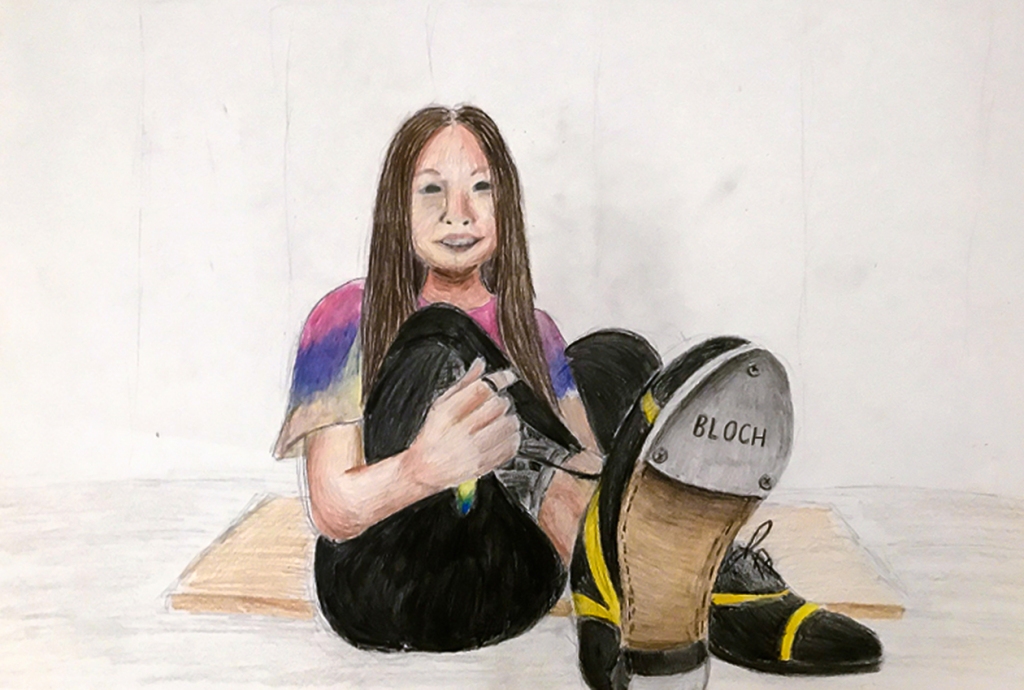

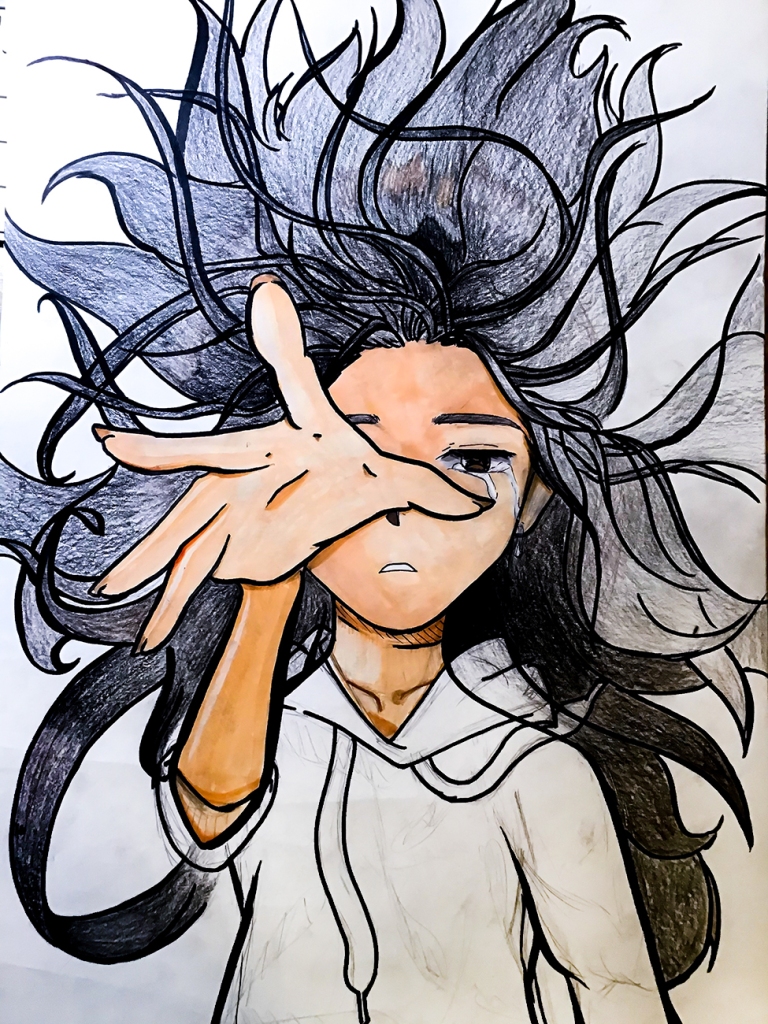
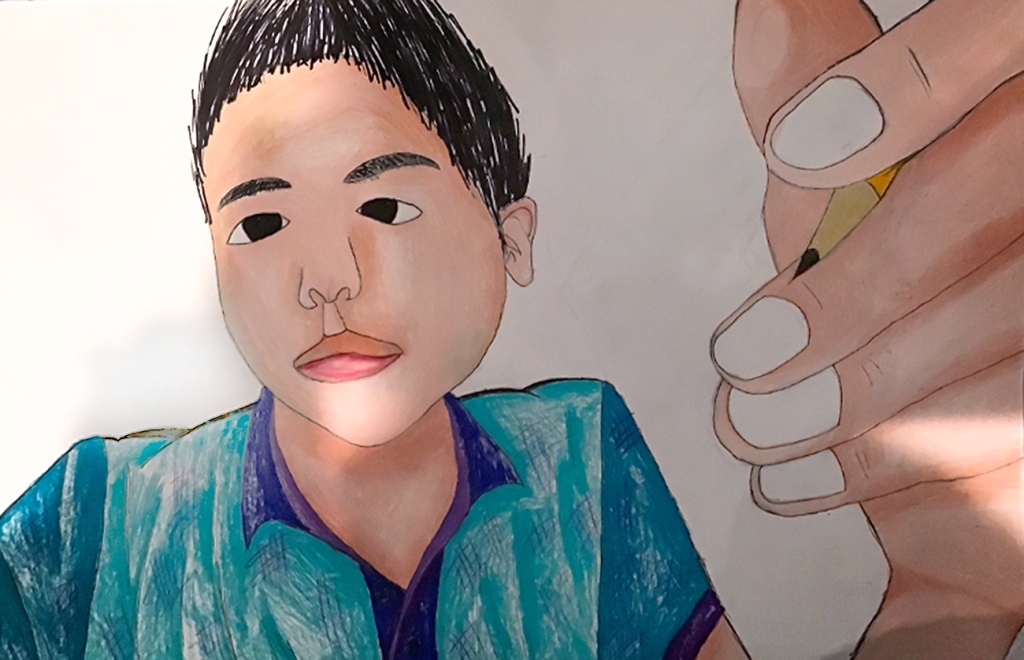


Next, these are completed artworks:
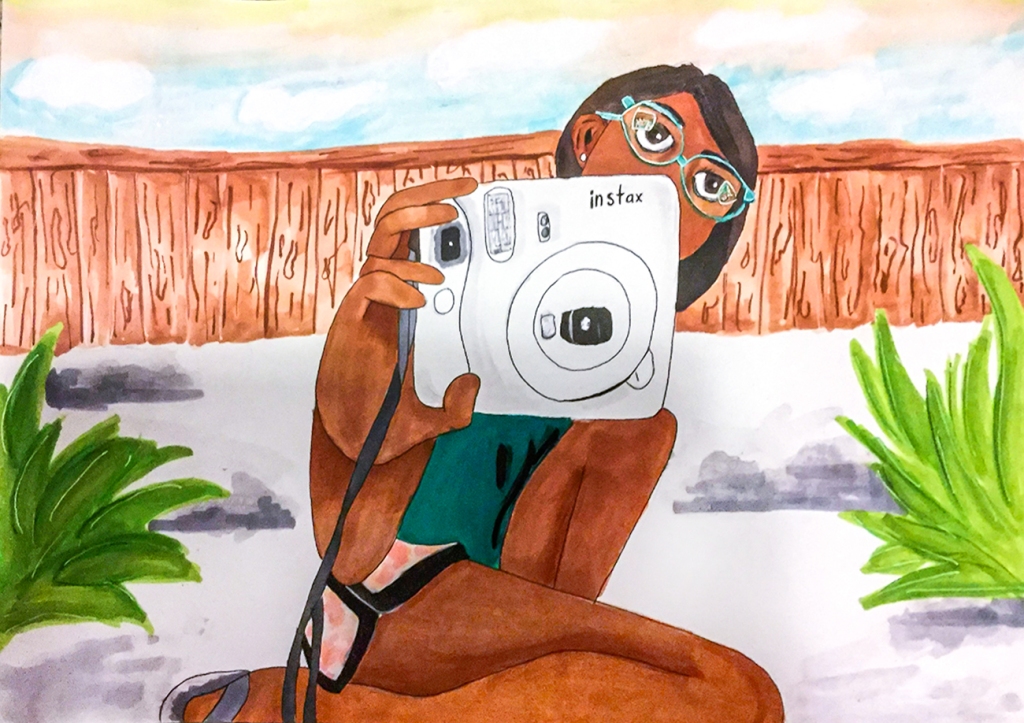

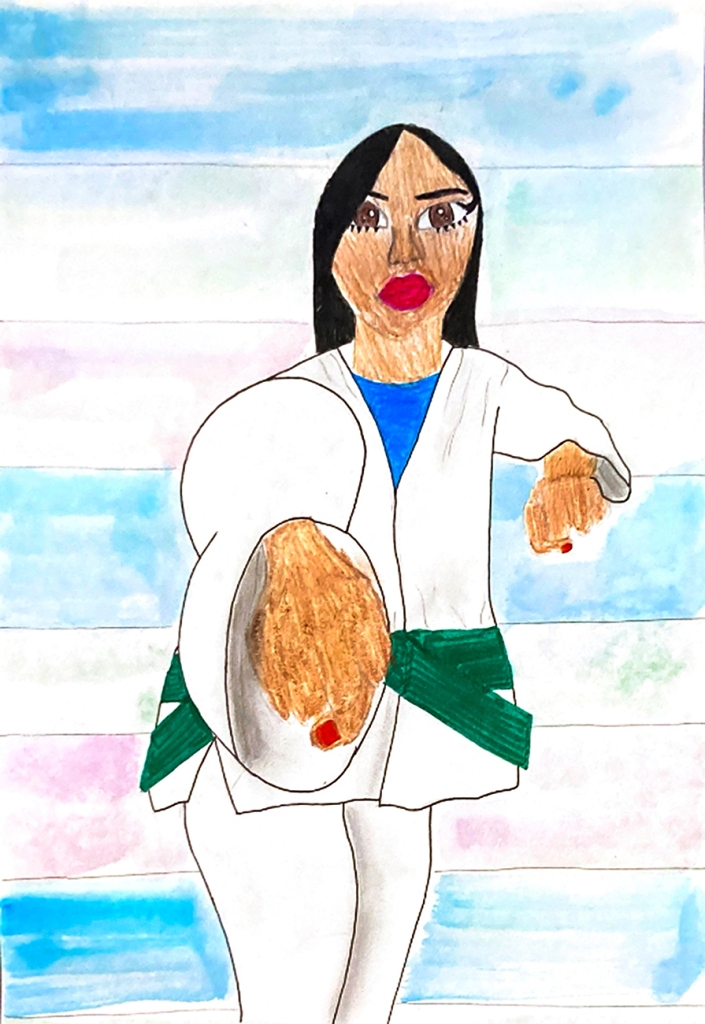


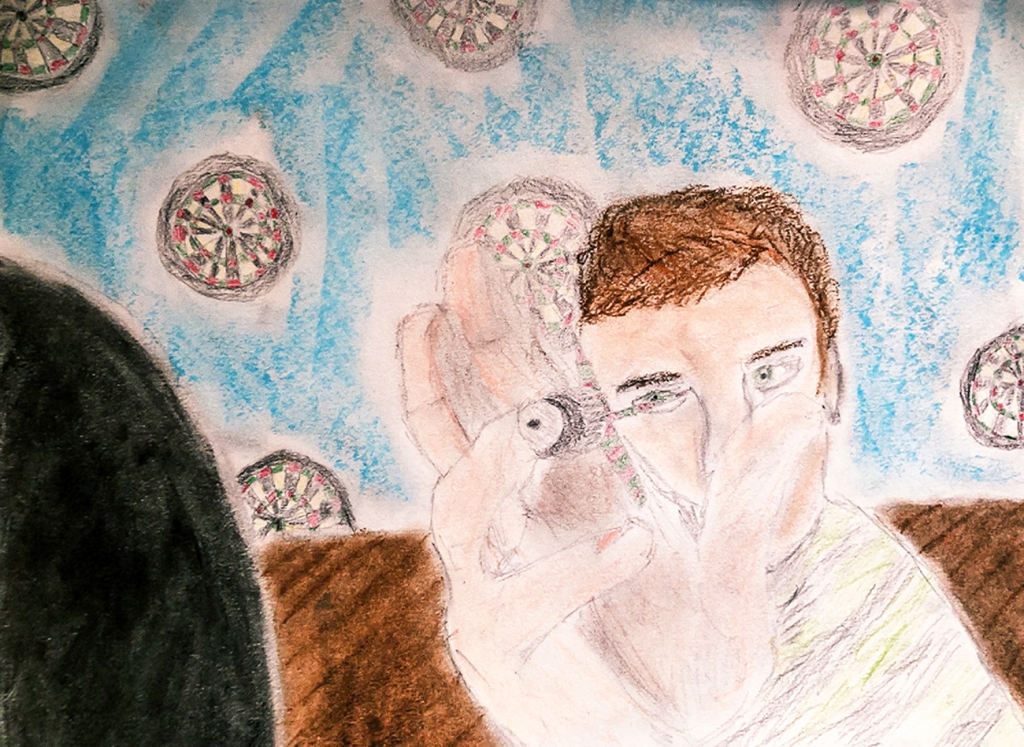
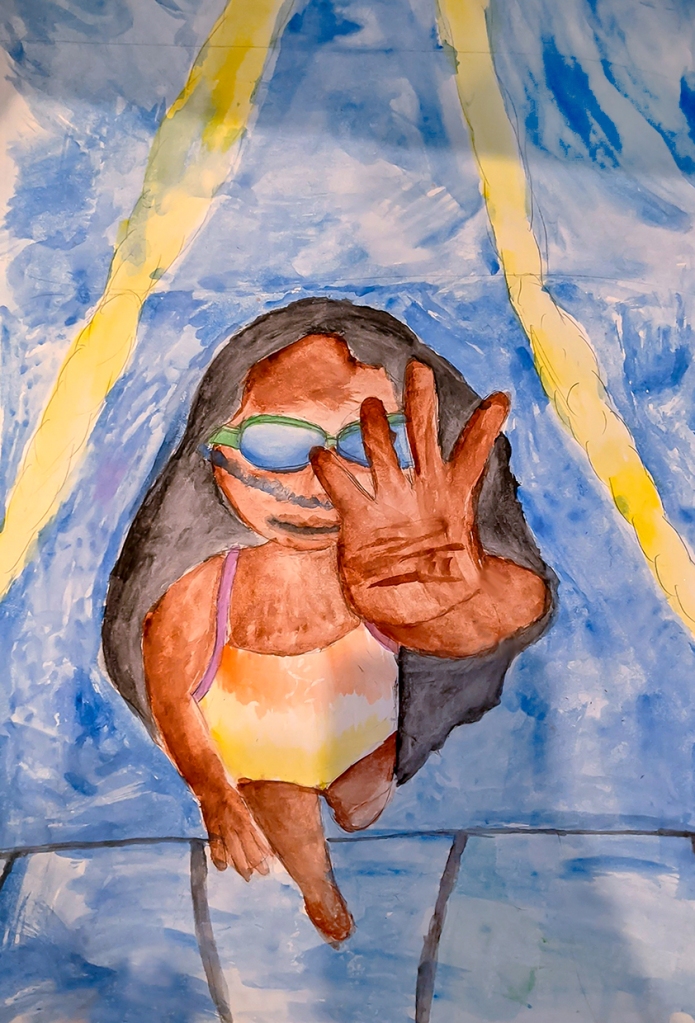
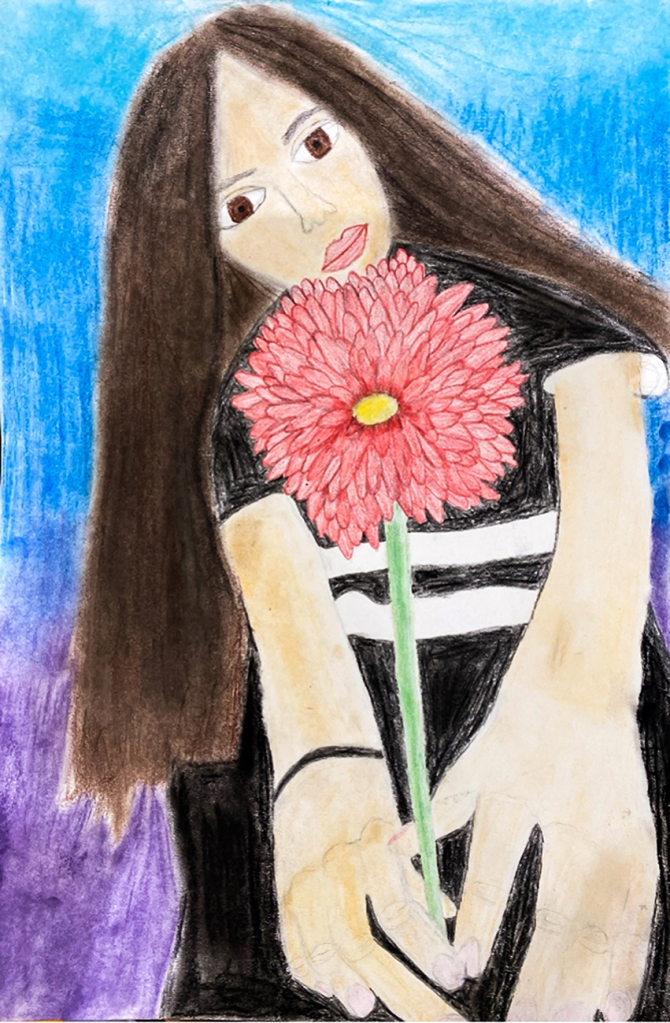
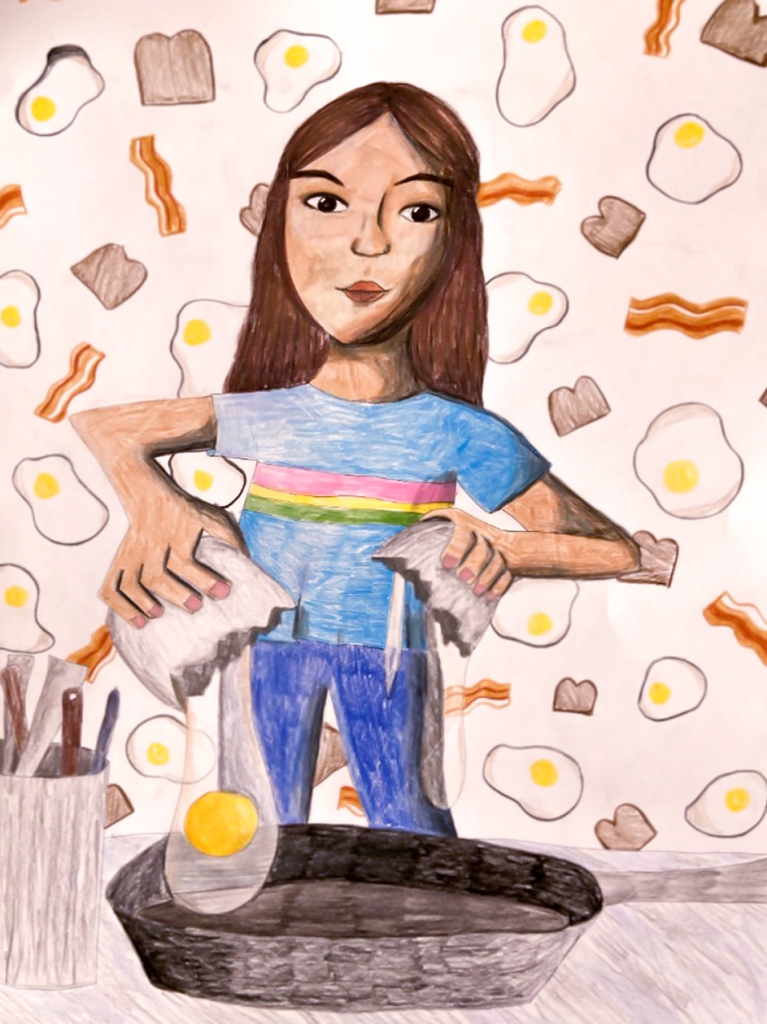
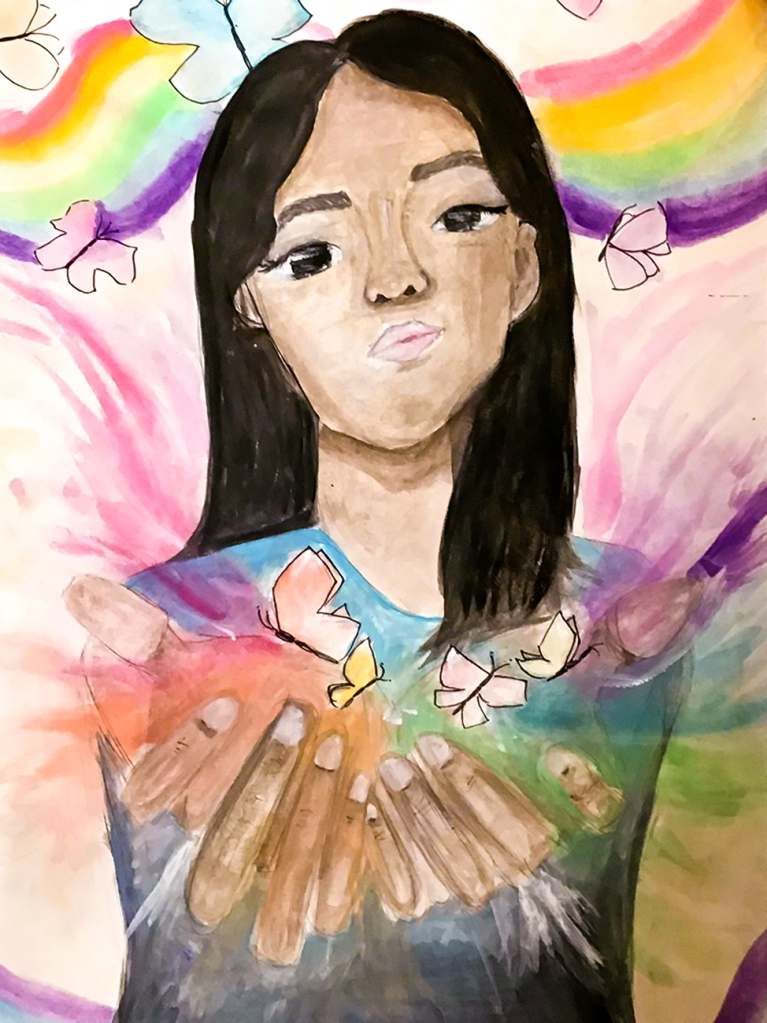
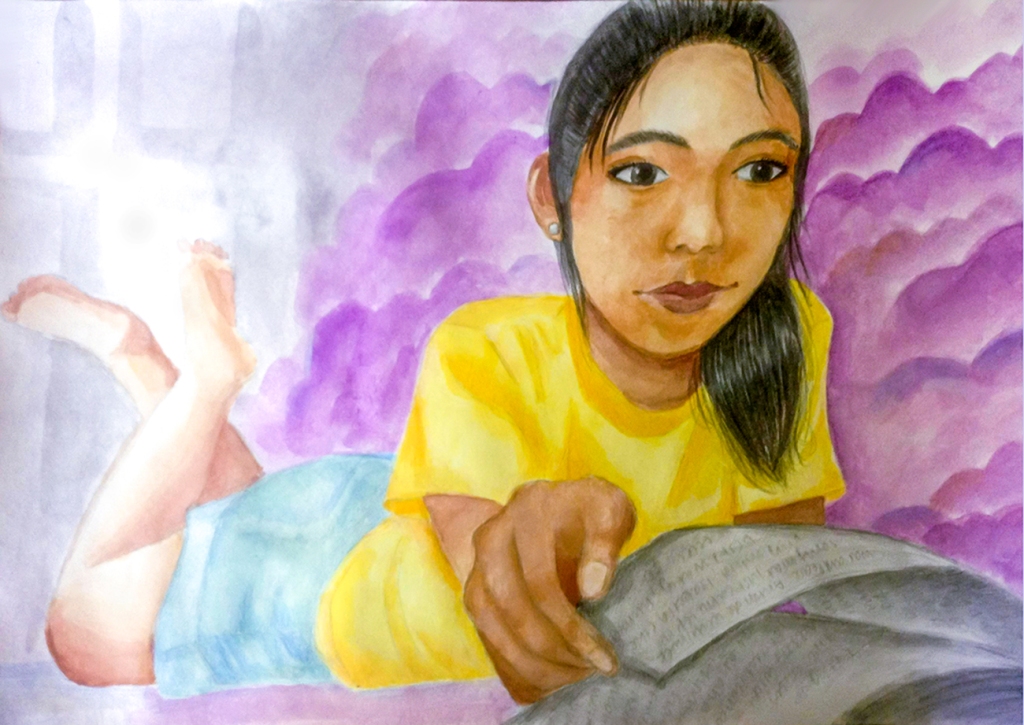
6th Grade – Yaacov Agam and Agamographs
Description of the Unit – Students will examine and discuss the work of artist Yaacov Agam, and through his inspiration they will create their own Agamograph, a kinetic work of art that transforms from one image to another, depending on the viewers’ perspective.

Activity statement – Yaacov Agam is an Israeli artist best known for his pioneering Kinetic Art. His lenticular prints, or Agamographs, made illusory images appear depending on the audience’s viewpoint. These pieces ask one to contemplate change, progress, time, and our role as observer vs. participant. Students will consider images of concepts, creatures or objects which can shift or change in some way, and incorporate their chosen concept into an Agamograph. To successfully create an Agamograph, students will need to make precise mathematical measurements throughout the entire process. Students will have the choice of coloring in their Agamographs in marker, colored pencil, oil pastel and watercolor (for backgrounds)—or a combination of any or all of these media.
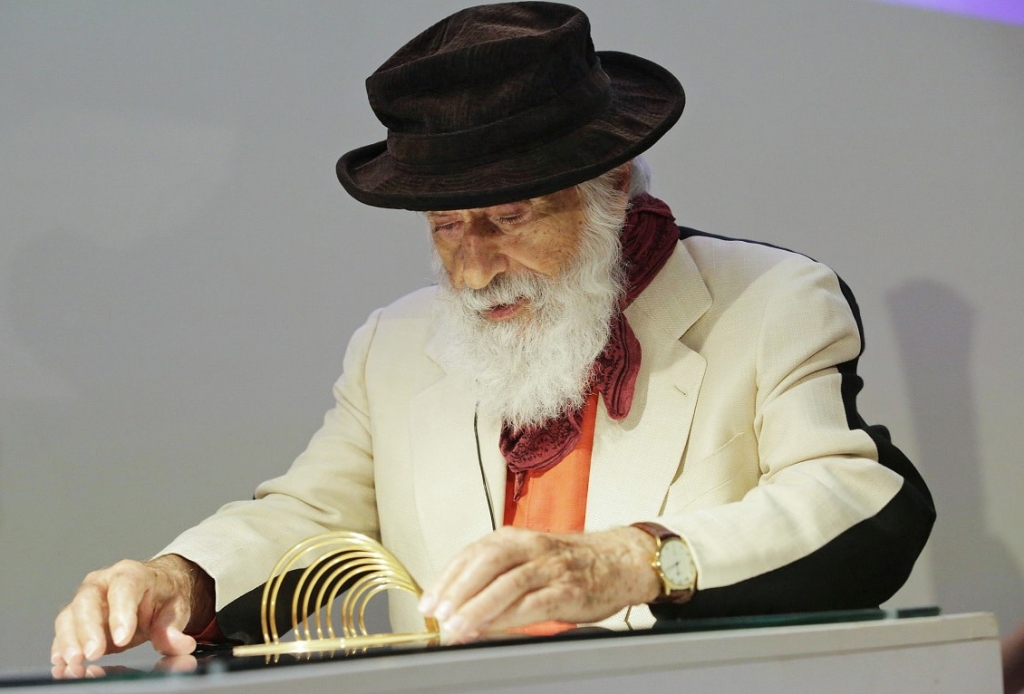


Goals – Students should…
Understand:
- The meaning of kinetic art
- What an Agamograph is and does
Know:
- Who Yaacov Agam is, and the kinds of concepts he explores in his kinetic artwork
Be able to:
- Use a ruler to make precise measurements
- Think in fractions and apply fractions to paper
- Visualize the process of change between two separate images in order to create an Agamograph
Resources and Materials –
- Examples of Yaacov Agam’s work, as well as examples of student Agamographs
- 9×12 white heavyweight (Bristol) paper
- 12×18 lightweight white paper
- Pencils
- Erasers
- Sharpies (fine and thick point)
- Rulers
- Colored markers
- Colored pencils
- Oil pastels
- Watercolor
- Brushes
- Jars
- Cutting board
Questions – (first few questions pertain to observing Agam’s work)
- What do you notice? What is happening?
- How do you think this work is created?
- What could the idea of kinetic art symbolize?
- What deeper meaning might there be to kinetic art?
- What makes kinetic art interesting?
- How do you feel about being able to interact with the work of art?
- How does this make it different to viewing a static work of art?
- What kinds of things can you imagine that transform?
- Give examples of two different beings, objects or concepts that can represent a transformation (ie, caterpillar to butterfly, egg in a nest to bird, daytime landscape to nighttime landscape, etc.)
Evaluation – Did students:
- Come up with a concept that represents change/transformation?
- Successfully construct an Agamograph to represent this transformation?
Informal:
- Student questions
- Group discussions
- Oral responses to essential questions
- Elaboration and risk-taking
The following are video representations of 6th grade students’ Agamographs:
The following are photos of 6th grade student Agamographs displaying both sides of each piece:
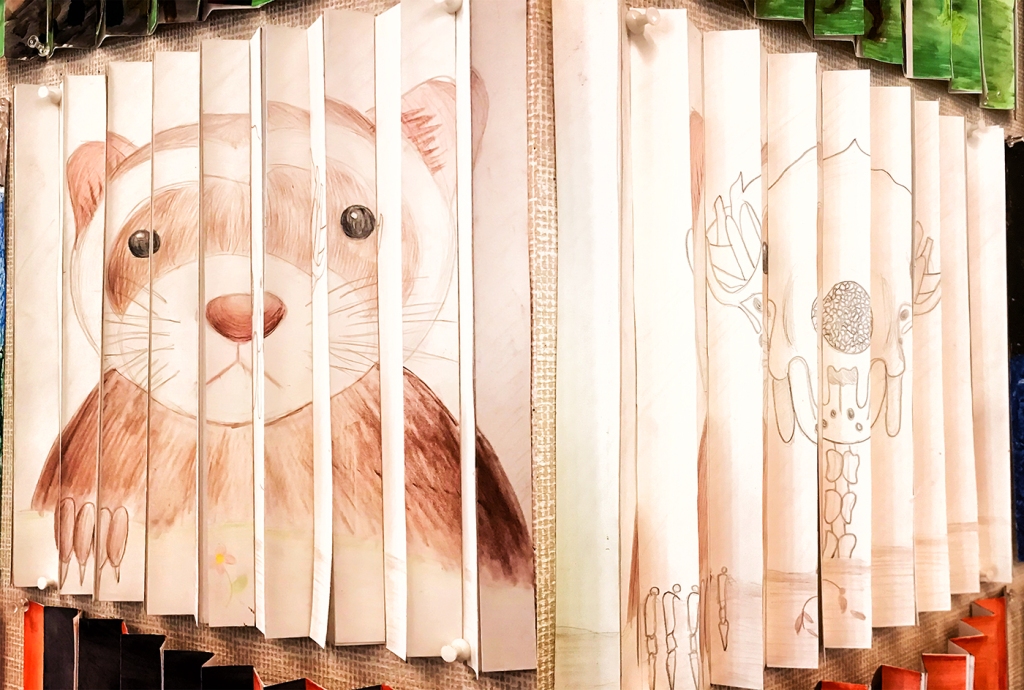
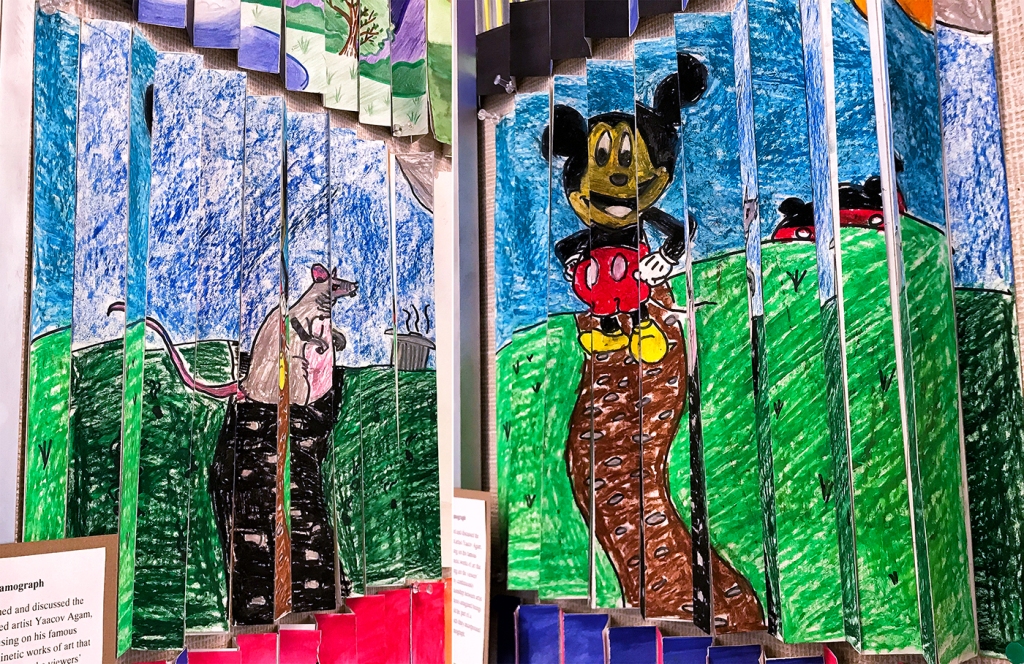
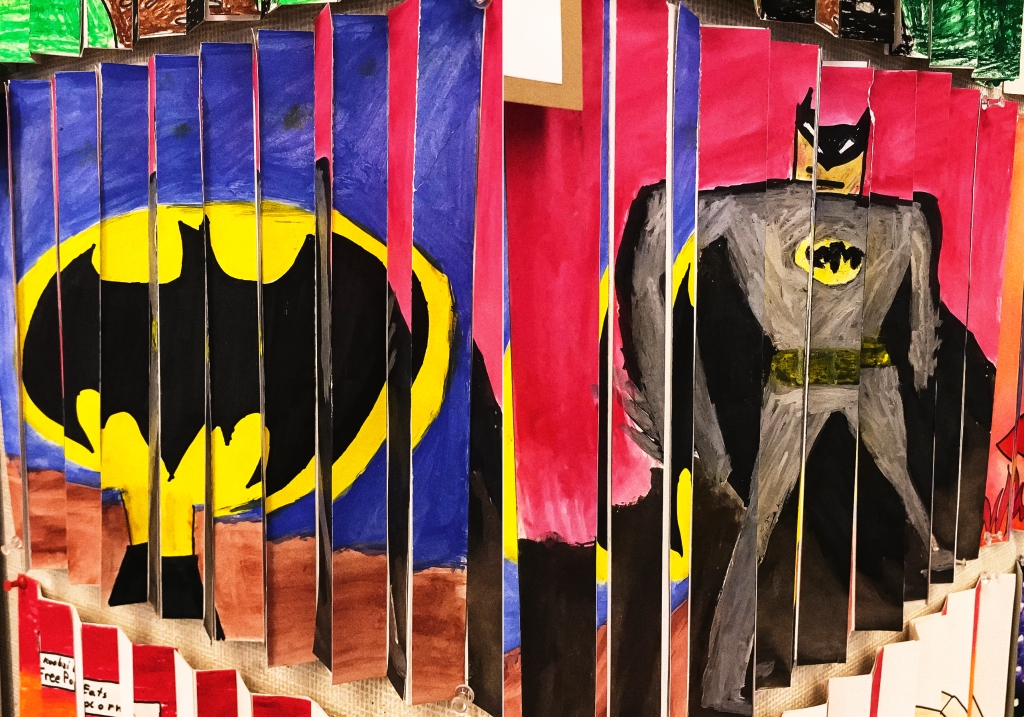
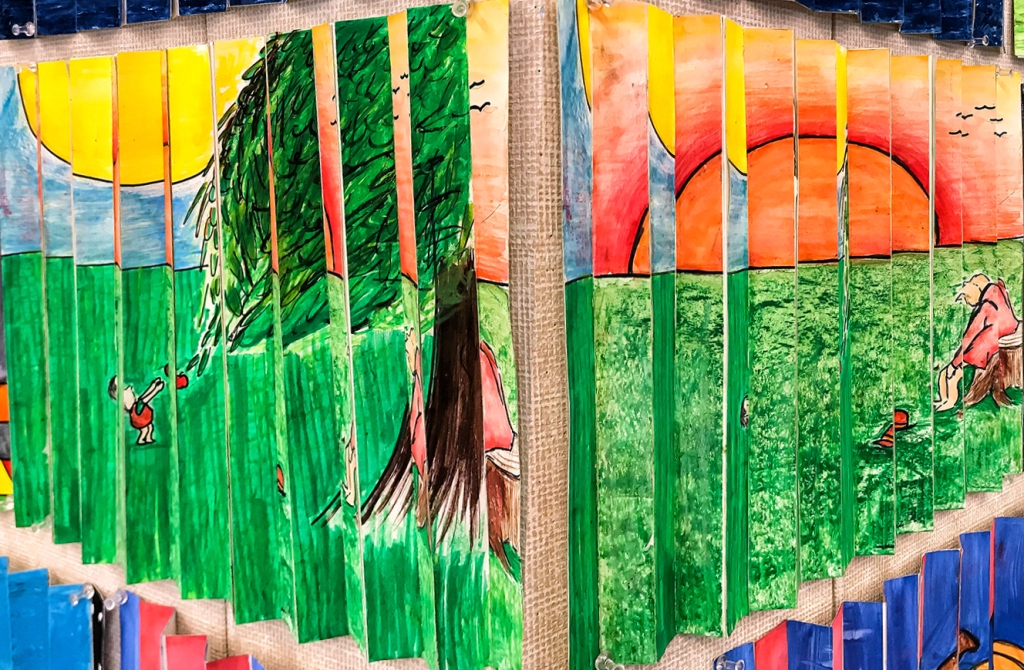
5th Grade – Play Props and Scenery
Description of the Unit – Students will conceptualize, design and build props and set pieces for their end-of-year performance. This unit can help anyone who has some kind of event or play to put on and is looking at how students can take full control of the process.
Continue reading “5th Grade – Play Props and Scenery”4th Grade – Día de los Muertos “Sugar” Skulls!
Description of the Unit – Students will celebrate Día de los Muertos by sculpting and designing their own “sugar” skulls (with clay) and setting them onto a colorful patterned background.

3rd Grade – Clay Aquarium Relief Sculpture
Description of the Unit – Students will create a kind of relief sculpture, an aquarium out of clay that will include sea creatures in a variety of organic and geometric shapes. Students will paint their aquariums, using bright, bold colors for emphasis.
Continue reading “3rd Grade – Clay Aquarium Relief Sculpture”




